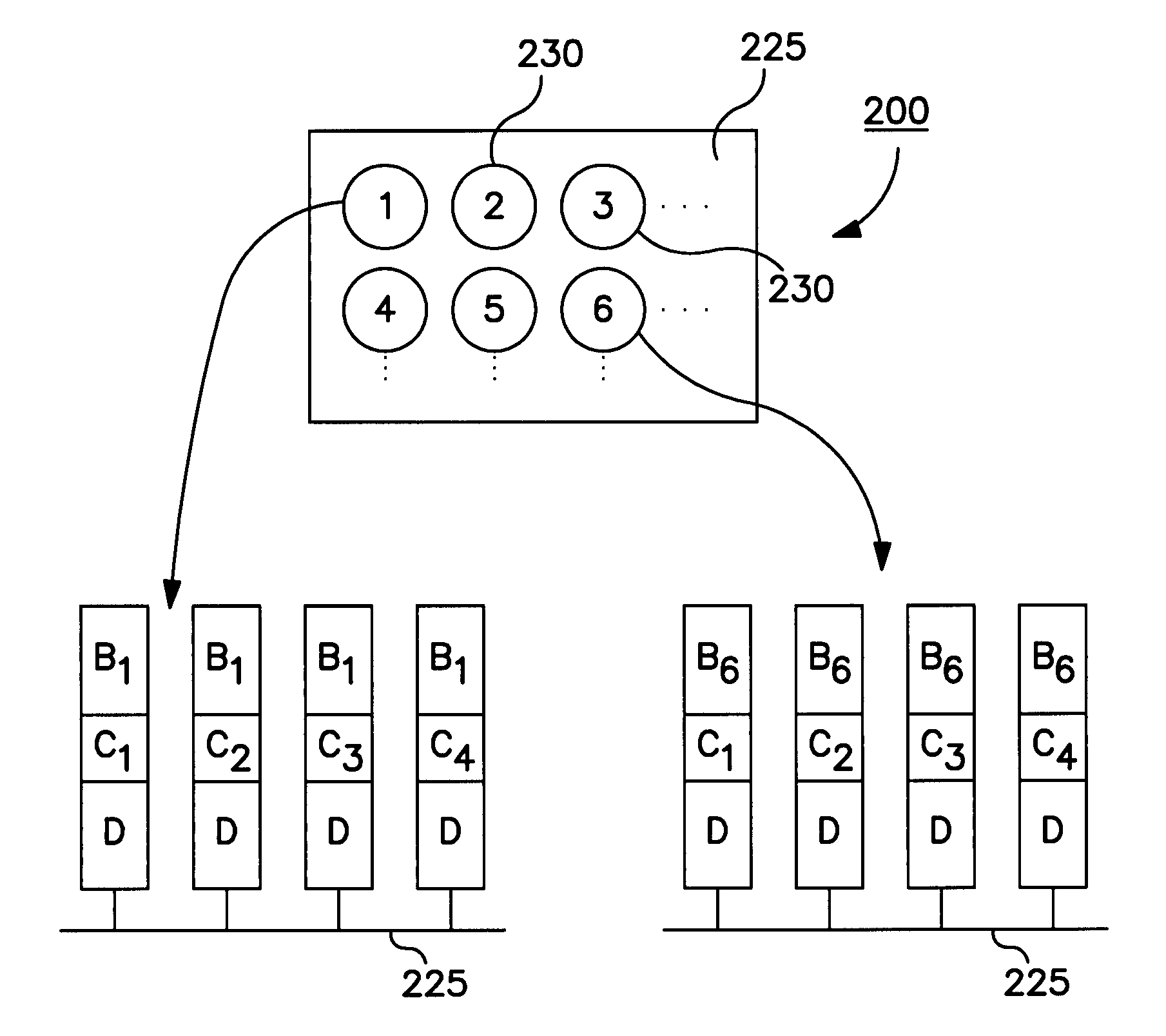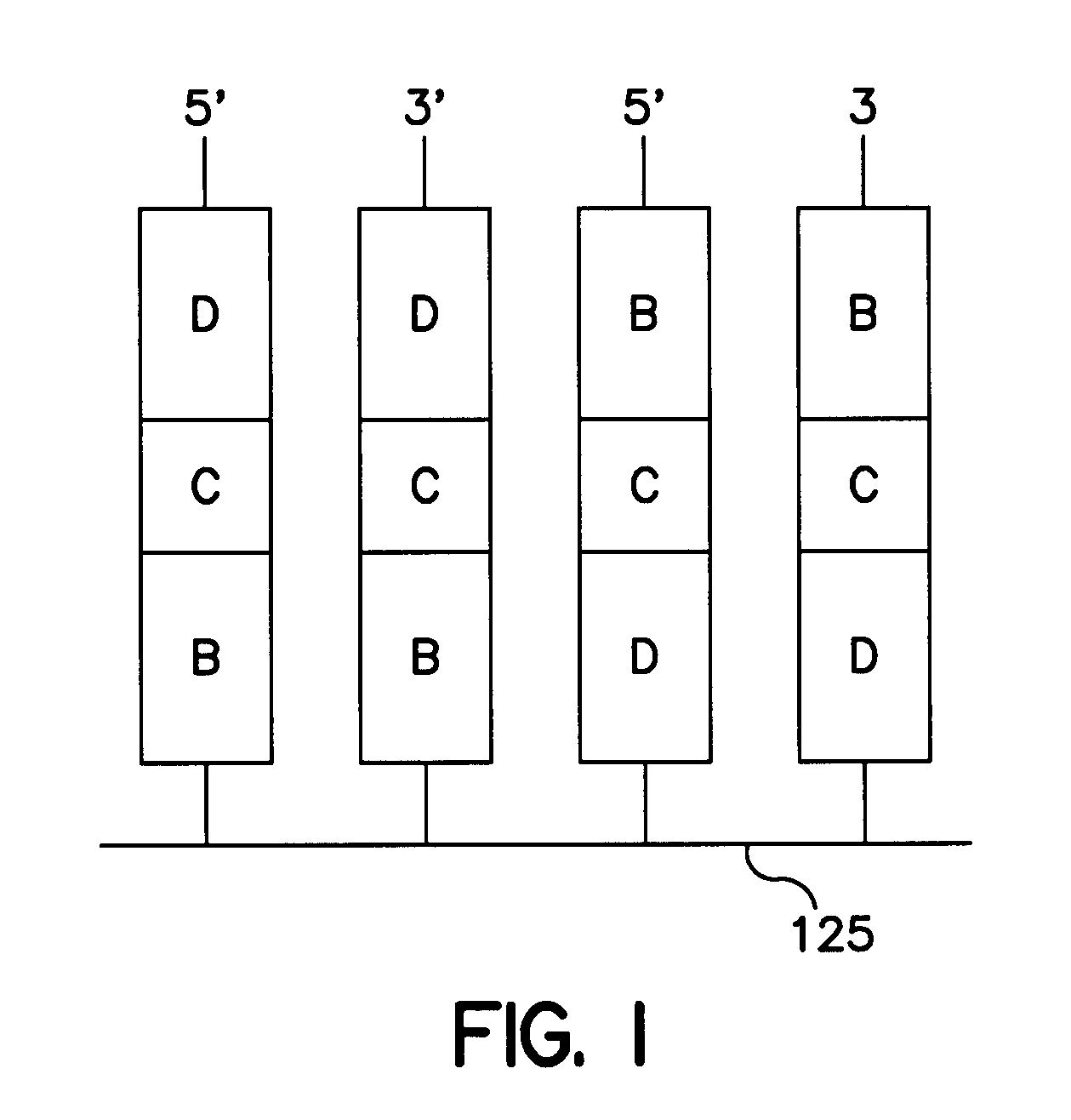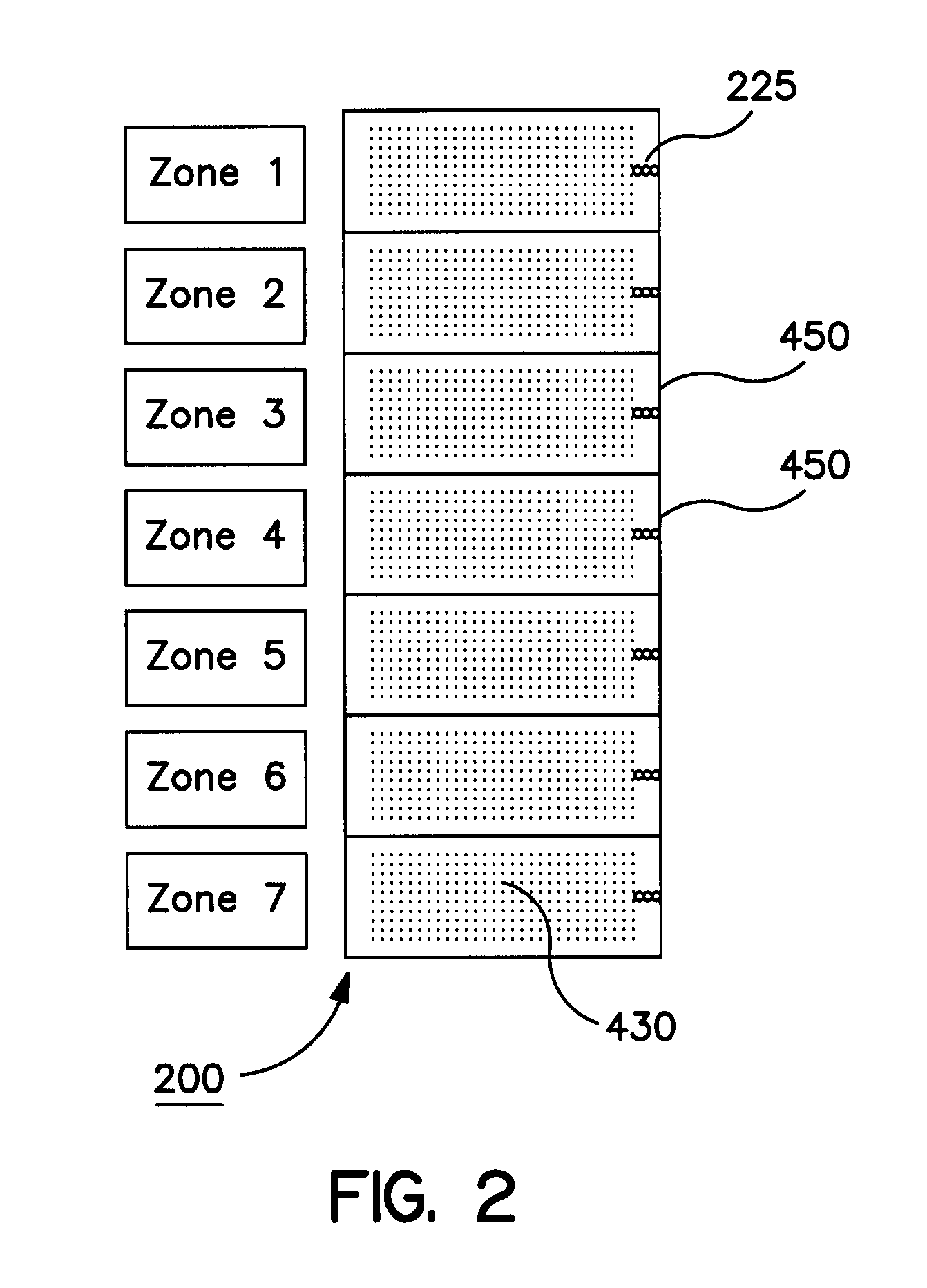Universal microarray system
a microarray and array technology, applied in the field of specific nucleic acid sequence detection, can solve the problems of large arrays containing unique probes, large changes in melting temperature(tm), and inability to express all of these genes, so as to improve hybridization kinetics, improve detection efficiency, and improve the effect of mismatch detection
- Summary
- Abstract
- Description
- Claims
- Application Information
AI Technical Summary
Benefits of technology
Problems solved by technology
Method used
Image
Examples
Embodiment Construction
[0054]The universal microarray system of the present invention finds use in a number of different applications including examining effects of disease states and physiological states of specific cell and tissue types and determining the effects of a drug or other compound on gene expression. One such non-limiting application is determination of the gene expression profile of a given cell or tissue type, such as in situations where:[0055]1. A selection of oligonucleotide probes are spotted onto a glass slide, such as a microscope slide, the analytical power of a given microarray depending on the selection of probe molecules that one has available to spot on the slide.[0056]2. Messenger RNA (mRNA) is isolated from the cell type of interest, and DNA copies of this mRNA population are synthesized enzymatically. These DNA copies are called cDNA molecules. The synthesis is done in such a way that the cDNA molecules are labeled with a fluorescent dye, a microparticle, a radiolabel, or some ...
PUM
| Property | Measurement | Unit |
|---|---|---|
| area | aaaaa | aaaaa |
| Tm | aaaaa | aaaaa |
| Tm | aaaaa | aaaaa |
Abstract
Description
Claims
Application Information
 Login to View More
Login to View More - R&D
- Intellectual Property
- Life Sciences
- Materials
- Tech Scout
- Unparalleled Data Quality
- Higher Quality Content
- 60% Fewer Hallucinations
Browse by: Latest US Patents, China's latest patents, Technical Efficacy Thesaurus, Application Domain, Technology Topic, Popular Technical Reports.
© 2025 PatSnap. All rights reserved.Legal|Privacy policy|Modern Slavery Act Transparency Statement|Sitemap|About US| Contact US: help@patsnap.com



